Types and characteristics of furniture edge
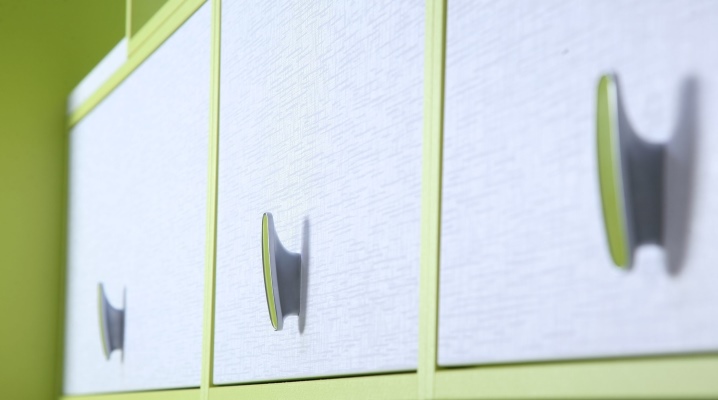
Furniture edge - synthetic edging, which gives the main elements, which include table tops, sides and sashes, a finished look. Quality and safety here go hand in hand with the cost of this component.
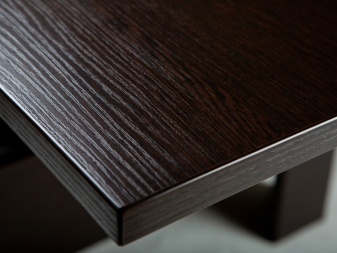
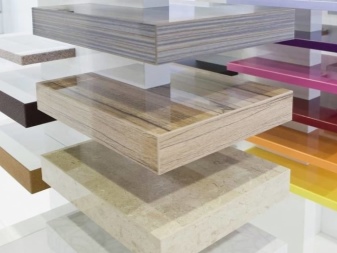
What it is?
A furniture edge is a flexible long piece that bypasses the main components of a particular piece of furniture around the perimeter. It is located in one of the most prominent places. Its presence plays one of the main roles in modern design and ergonomics of furniture products. Its second name is an edge tape, which is the end part, for example, of a table top.
The fact is that the main parts, for example, a wardrobe or a bedside table, consist mainly of materials made in the form of slabs. Be it plywood, board, chipboard, fiberboard or MDF, the drawing of the same bedside table or cabinet provides for the connection of these large elements by means of a furniture corner, dowels, L-, P- or C-shaped profiles or a T-rail. The doors are hinged.
But the cross section of the same chipboard, in order to hide the rough structure of sawdust, is closed with a furniture edge.
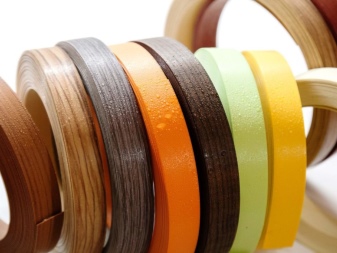
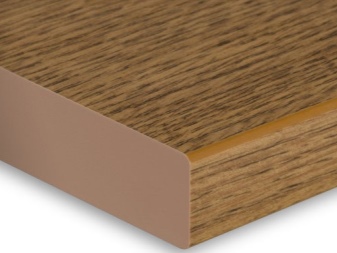
Appointment
In addition to giving an elegant appearance, the furniture edge has an important function - it protects fiber (or other board structure) from decomposition under the influence of vapors, acids, alkalis, salts. An acidic, salty and alkaline environment is the lot of the kitchen, bathroom or backyard. Moisture lurks unprotected slabs and boards in the bathroom and utility room - as well as in the event of an incident involving a roof leak, water leakage from the system, etc.
The edge tape seals the pores and structure of the chipboard. In the board or slab, in turn, adhesive reagents and formaldehyde resins are used to hold sawdust wood together. Formaldehyde is a poison and, if inhaled continuously, causes chronic respiratory illness. The table top of the table, the edge of which is not properly sealed with the furniture edge, emits formaldehyde fumes in the heat (summer).

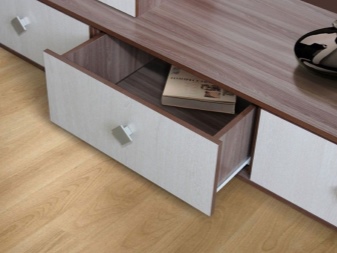
In general, these tapes are used in the production of cabinets of the "compartment" type, children's furniture, furniture items for kitchen-living rooms, etc.... Edging tapes are in special demand, softening the impact of objects or grazing people passing by on the ends. One of the demanded areas of application is desks and chairs in schools, secondary vocational and higher educational institutions.
A significant advantage here will be a rich selection of decor options and color schemes. All this will give an original approach to interior decoration of premises for any purpose, be it a bedroom, an auditorium or an office.
Today's furniture tape suppliers produce smooth and textured tapes that are pleasing to the touch and look. These edges are similar to the surface of stone, wood, leather, etc.
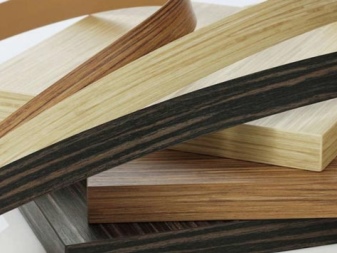
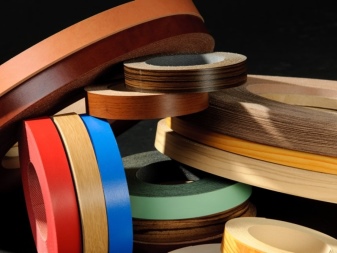
The furniture edge differs in the following points.
- By the type and variety of material. These can be wood materials, metal, plastic, composite, etc.
- In shape: U- and T-shaped cross section.
- By dimensions: length, wall thickness and width, insertion depth of the T-shaped edging.
Finally, the anchoring method can play a decisive role. It will be fixing on self-tapping screws with pre-drilling or universal glue, depending on the name of the product.
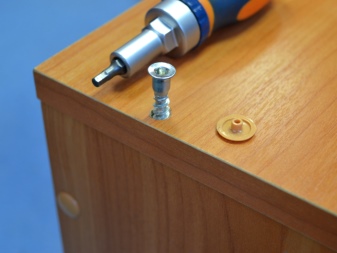

Furniture edge making materials
For home furniture, tapes made of acrylic, melamine, and some types of plastic are often used.
Melamine
A variety of choices and cheapness go hand in hand here. Manufacturing technology melamine edging - multilayer paper impregnated with an adhesive base containing melamine and formaldehyde resins. Supplied complete with glue - in some cases, instead of it, an adhesive is applied to the edge from the inside, which dries soon after removing the protective tape. Self-adhesive tape is used for self-replacement of a fallen off and cracked edge with a new one.
Glueless (glue purchased separately) is used by furniture craftsmen. This subtype of products is sold in any household, furniture or construction outlets, it is very easy to use, it is glued by hand even by an unprepared user.
The disadvantage of this solution is that the furniture edge is not thick enough, it is easily damaged by careless and careless use, it is capable of letting water through, and quickly fades in the sun.

Pvc
Plastic tape used in home and office furniture is more impact resistant than melamine tape and is not afraid of heat and frost. No harmful fumes. The texture amazes ordinary people with its diversity - such a tape will fit under a purely wooden or sheathed with sheet steel countertop. UV light does not destroy PVC material - and organic acids, alkaline chemical compounds and salt do not have any destructive effect. In addition, PVC edgebands are produced in the form of a tape with increased and decreased rigidity. This approach makes it possible to choose an edge for any piece of furniture, be it a wardrobe, bed or table.
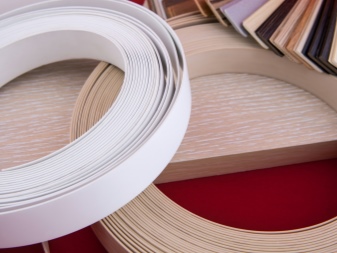
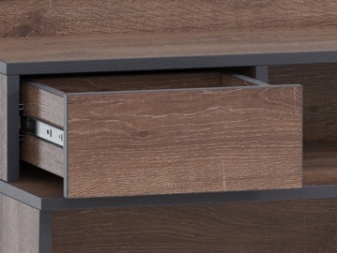
ABS plastic
The full name of ABS is acrylonitrile butadiene styrene. That is, ABS is an acrylic-based hybrid. Differs in unsurpassed impact resistance - due to the presence of styrene reagent, from which solid and expanded polystyrene is also made. There are no reagents harmful to human health in the ABS - and the material itself is very easy to process. ABS tape does not fade under the influence of ultraviolet radiation and heat, does not lose its original shape for many years.
This edge has a high-quality glossy and matte surface, it can be easily painted in any color even at the production stage, it does not support self-burning well. The last factor is a significant contribution to fire safety. The disadvantage is the high cost of this consumable. ABS is an attribute of furniture in the price range above average. They do not skimp on the quality of products.
A high margin of strength and load, moisture protection and chemical neutrality will serve as a bonus.
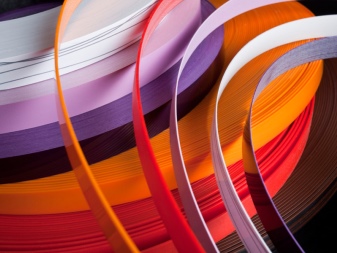
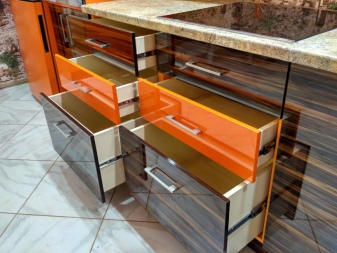
Veneer
Veneer is a thin slice of solid wood that has been given the shape, texture and color of other tape varieties. Furniture makers use this tape to seal the edges of keyboards... The disadvantages of veneer are the relative high cost and the requirement for such work of a certain skill.
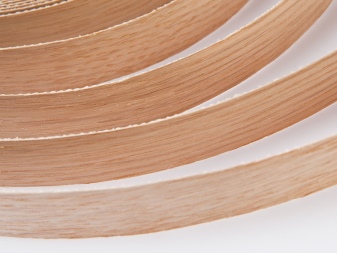

Acrylic
Transparent plastic is called acrylic, its former name is plexiglass. If the texture is applied from the inside, then the users are characterized by optical illusion, resembling a three-dimensional image. This material has perfect smoothness, effectively protects the edged board or slab from damage, moisture and food / household chemicals. The main use of acrylic is furniture details that immediately fall into the field of visibility of visitors. They can be used in the bathroom or shower, they are not exposed to the damaging effects of ultraviolet radiation for a number of years.
The cost of plexiglass is one of the highest among materials of similar properties.
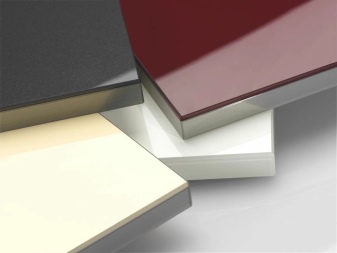
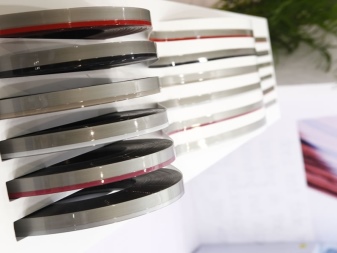
Types by shape
Furniture edge is available in the form of a U- and T-shaped profile... The U-shaped edge profile refers to overhead edging, has a significant variation in rigidity. An untrained user will secure them quickly and with high quality.The disadvantages of the P-profile include sharp edges, behind which a layer of everyday dirt can accumulate. Peculiarity U-shaped film - girth in shape: sometimes manufacturers produce edging tape with rounded corners.
Have T-edges purpose - embedding in a board or plate. It has a thickened base that effectively hides not quite neat cut of the board. The durability and practicality of the T-film is beyond praise; a longitudinal groove is cut out for it along the entire perimeter of the board or slab.
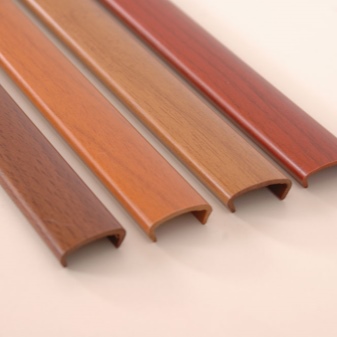
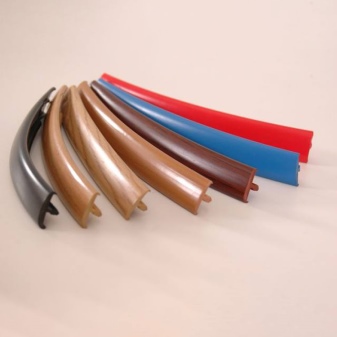
Dimensions (edit)
The edging on the table or in a conspicuous place of the cabinet should have an attractive appearance that fits into the current design of the room, and also provide full protection of the slab or board from influences that decompose it from the outside. Inexperienced users often resort to the service of applying furniture edging by specialists. Sometimes the consumer orders the edging of the furniture of his own manufacture. Experts will select a product that is suitable for the width and type of cross-section. The ends of the parts of the furniture item, not hidden from the gaze of an outside observer, require a special approach to the application of the edging tape.
The cellulose-melamine edging has a wall thickness of 2-4 mm. A factory that produces furniture edgebands does not produce products thicker than the maximum value - when using an edge, for example, 1 cm thick, the furniture will lose its attractive, presentation.
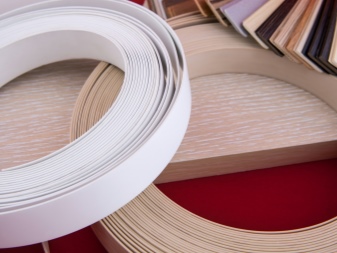

Melamine films are sold in linear meters - in unlimited quantities: the seller can cut off the piece the buyer needs from the roll. Self-adhesive melamine edging - without the user applying an additional layer of adhesive - is dispensed in rolls of 200 m, and its width reaches 26 mm.
For PVC edgebands, more modest thickness values are typical - 0.4 ... 2 mm. It is not recommended to produce thicker plastic: the beneficial effect for wood or board will increase slightly. The thin edge goes to the front of the table or headboard, the thicker one is used to frame shelves and drawers. Width - about 26 mm. The coils are wound at 150-300 m. There are also 40 mm (in width) plastic edges.
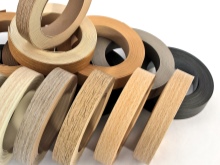
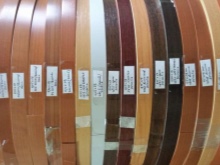
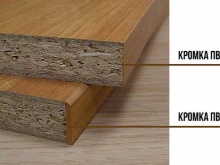
In the case of ABS, the width of the edge will reach 19-22 mm. Thickness - from 0.4 to 3 mm. In order for the edge to hold and protect the wood material in the highest quality, 2… 3 mm material is used. Overlapping edges in the form of a U-cut are produced in widths of 16 and 18 mm.
Before starting to trim the furniture, the master (or user) measures the thickness of the board... So, for a table, a chipboard plate with a thickness of 16 ... 32 mm is often used. Chipboard is afraid of mold, microorganisms and fungi: despite formaldehyde and other bonding additives that are poisonous to humans, mold and mildew easily adapt to such an environment.
It is necessary to upholster the furniture being repaired with high-quality edging: the connection must be tight and airtight.
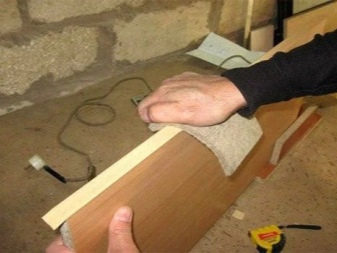
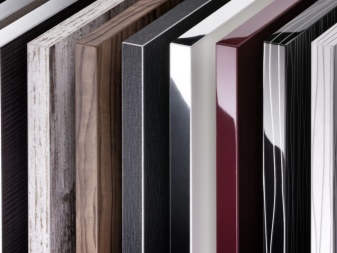
How to choose?
The furniture edge is chosen according to the material from which it is made. Also decisive criteria here are the thickness and width of the edging tape, texture and color scheme, purpose and, finally, cost. According to the color palette, the edge should be combined with the main structure, for example, the dining table, which will be upholstered with it. If the elements themselves are good, but do not complement each other well, then the overall impression of a table trimmed with such an edge will be spoiled.
The absence of a factory glue layer will encourage the owner to sand and degrease the inner surface of the edge before fixing it. Universal glue, for example, "Moment-1" is able to glue wood (solid wood or chipboard) and plastic - the edge will stay in place for many years.
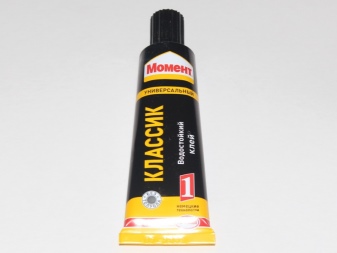
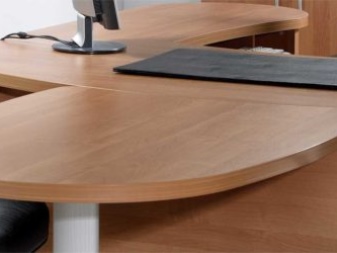
There are other types of decorative furniture edges, for example, rubber... The consumer buys such glue separately. There are cases when the edge, even packed, lay in the warehouse for more than a year, and the adhesive layer has managed to significantly lose its holding properties.In this case, the edge is cleaned of its remnants, sharpened from the inside with an abrasive material, then glue is applied, and it is pressed tightly for a while.
The appearance sometimes requires an expert opinion. Look to the latest fashion trends in the interior to find a hem that fully suits your tastes.
When furniture is purchased ready-made, and there is an edge tape on it, the consumer carefully checks how it sits in the right place, and how well it is held there.
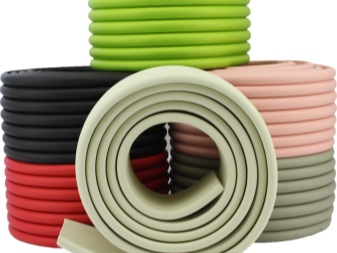
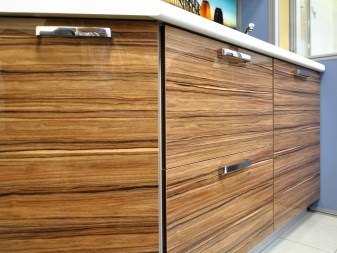
Mounting methods
You can fix the edge without the help of a specialist. A beginner should know the following. Edgebands containing an adhesive layer already on delivery may require heating the material with a stroyfen or iron. The latter should contain a fluoroplastic support - so as not to scorch, not to melt the edge tape. An alternative is a reinforced cotton fabric. The iron or hair dryer does not heat above 150 degrees.
Glueless edges (including mortise) will require an adhesive suitable for joining plastic or rubber to wood or wood-containing materials. A furniture roller is required to press down, and a non-stiff fabric will prevent damage to the outer texture of the edging tape. Melamine and plastic do not require a thick adhesive layer.
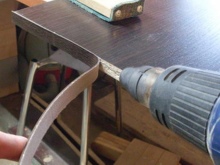
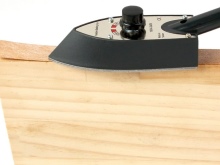
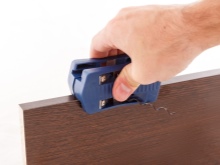
Preparing furniture for edging - sanding, smoothing rough irregularities. After leveling the edges of the board or slab, dust is removed from the treated surface, and the first is degreased before applying glue. In this case, the edging tape is cut off 2-3 cm more than necessary. Then the user needs to correctly press the edge evenly and along the entire length, smoothly but quickly distributing the pressing force.
After pressing the heated edge with glue, it needs to cool down. Do not try to cool the glue by applying ice and cold objects to the bonding site - the cooling should be smooth, natural.
Most adhesives are kept under pressing load for no more than a quarter of an hour.
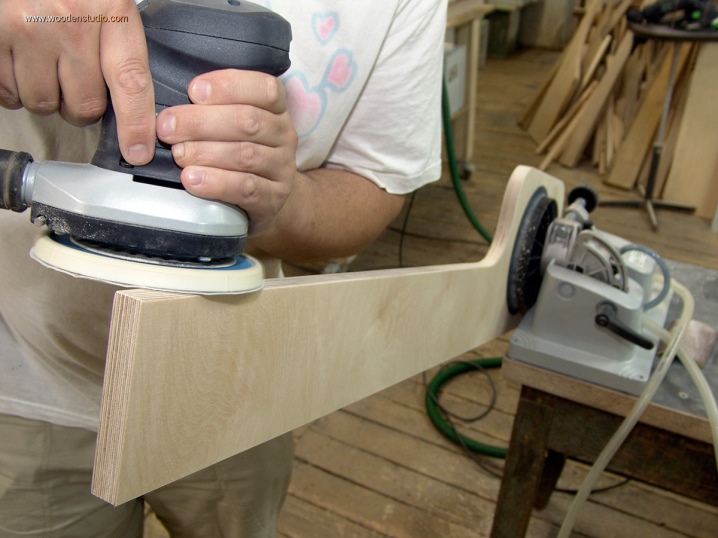
Before placing a load, such as a piece of wood, on the edge band to be glued, the object loading the joint is wrapped with a rag. When the glue has hardened and dried and the edge adheres tightly to the wood or board, the user will proceed with the finishing.
To cut off excess areas that do not fit into the area and perimeter of the pasted surface, a construction and assembly knife is used, which has a sharp, like a razor blade, cutting edge. Thick furniture edging will require sanding the edges with sandpaper. Thinner, less than 1 mm, edge will be limited only by neat trimming of excess edges and ends. Furniture makers use a hand-held milling machine for fine, efficient and high-quality processing of furniture edges.
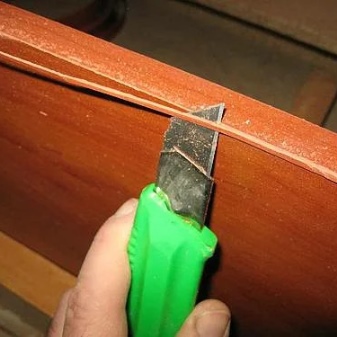
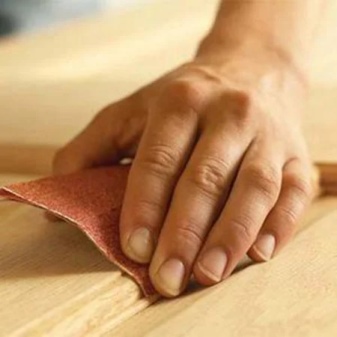













The comment was sent successfully.